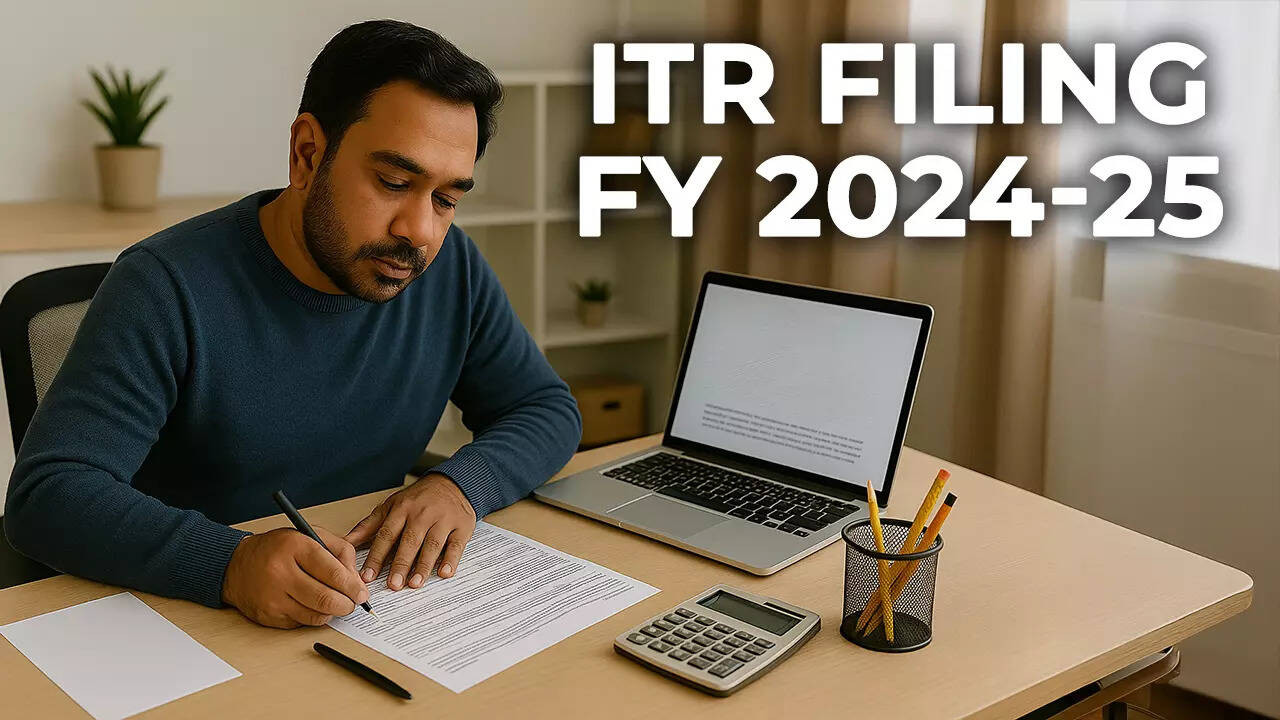ITR Filing FY 2024-25: The Income Tax Department has enabled online ITR filing for FY 2024-25 (AY 2025-26) via incometax.gov.in, initially supporting ITR-1 and ITR-4 forms. These forms are for individuals with income up to Rs 50 lakh from specific sources.
Tax Season is Officially Open! Dust Off Those Documents (and Maybe Grab a Coffee)
Alright, folks, deep breaths. It’s that time of year again – time to face the music, gather your papers, and navigate the often-thrilling (okay, sometimes thrilling) world of income tax returns. But hey, at least the starting gun has been fired! The Income Tax Department just announced that ITR-1 and ITR-2 forms for the financial year 2024-25 (assessment year 2025-26, for those who speak tax-speak) are now live and kicking on the e-filing portal.
Yes, you read that right. You can officially start filing.
Now, I know what you’re probably thinking: “Already? Wasn’t it just Christmas?” Time flies when you’re earning, spending, and hopefully, saving money. And while you might be tempted to shove this task to the bottom of your to-do list (joining the pile of things “I’ll get to eventually”), resist the urge! Getting a head start on your taxes is always a good idea.
So, what does this early launch mean for you? Let’s break it down, minus the dense legal jargon.
ITR-1: The “Sahaj” for the Simple Souls
Think of ITR-1, often called “Sahaj,” as the streamlined option. It’s designed for resident individuals whose total income clocks in at a cool ₹50 lakh or less. This income needs to be primarily from these sources:
* Salary/Pension: The bread and butter for most of us.
* One House Property: Maybe you own the home you live in, or you’re renting it out.
* Other Sources: This covers things like interest earned from savings accounts, fixed deposits, or even winnings from a lottery (lucky you!).
However, there’s a catch. If you have income from multiple houses, capital gains (like selling stocks or property), or income from business or profession, ITR-1 is not your friend. You’ll need to move on to more complex forms.
ITR-2: Stepping Up a Notch
ITR-2 is for individuals and Hindu Undivided Families (HUFs) whose income doesn’t quite fit the ITR-1 mold. This is generally for individuals:
* Whose income exceeds ₹50 lakh.
* Who have income from more than one house property.
* Who have capital gains from the sale of assets.
* Who are directors of a company.
* Who have invested in unlisted equity shares.
* Who are not eligible to file ITR-1 for any other reason.
Essentially, if your financial life is a bit more complicated than a simple salary and a savings account, ITR-2 is probably the form for you.
Why File Early? Beat the Rush and Reduce Stress
You might be wondering, “Why rush? I have until the end of July, right?” Technically, yes. But let me tell you, procrastinating on taxes is a recipe for stress and potential errors.
Here’s why filing early is a smart move:
Avoid the Last-Minute Website Crash: Remember the frantic scramble to file in the final days? The e-filing portal can get seriously* overloaded, leading to frustrating delays. Beat the rush and file when things are calmer.
* Faster Refunds: If you’re expecting a refund (and who isn’t?), filing early often means getting your money back sooner. Imagine having that extra cash in your account to put towards something fun (or, you know, something responsible).
* Peace of Mind: Let’s face it, knowing your taxes are filed and done with is a huge weight off your shoulders. You can finally relax and focus on other things, like enjoying the summer.
What’s New This Year?
While the core filing process remains largely the same, keep an eye out for any updates or changes in the forms themselves. The Income Tax Department is constantly tweaking things to improve the system and address new regulations. It’s always a good idea to download the latest version of the forms from the official e-filing portal to ensure you’re using the correct version.
A Few Words of Advice (From Someone Who’s Been There)
Filing taxes can feel daunting, but it doesn’t have to be a nightmare. Here are a few tips to make the process smoother:
* Gather Your Documents: Before you even think about logging into the portal, collect all the necessary documents – Form 16, bank statements, investment proofs, etc. Having everything organized will save you a lot of time and frustration.
* Double-Check Everything: Accuracy is key. Make sure all the information you enter is correct, from your PAN number to your income details. Even small errors can lead to delays or penalties.
* Consider Professional Help: If you’re feeling overwhelmed or unsure about something, don’t hesitate to seek professional help from a tax advisor or accountant. They can provide guidance and ensure you’re filing correctly.
So, there you have it. The tax season is officially upon us. Take a deep breath, gather your documents, and get started. Remember, a little preparation goes a long way. And who knows, maybe you’ll even enjoy the process (okay, maybe not enjoy, but at least you’ll survive!). Good luck, and may your refunds be plentiful!
📬 Stay informed — follow us for more insightful updates!







